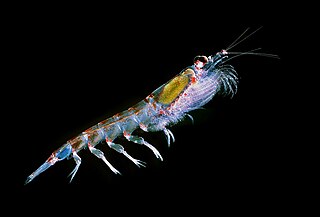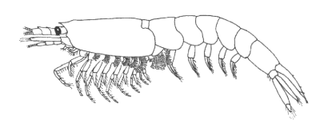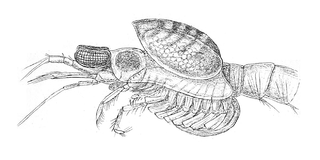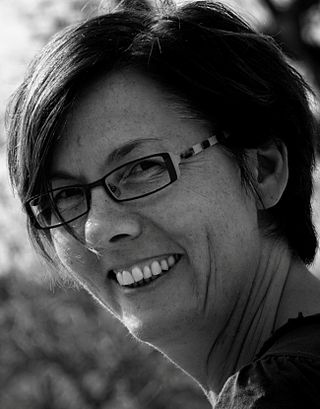
Antarctic krill is a species of krill found in the Antarctic waters of the Southern Ocean. It is a small, swimming crustacean that lives in large schools, called swarms, sometimes reaching densities of 10,000–30,000 individual animals per cubic metre. It feeds directly on minute phytoplankton, thereby using the primary production energy that the phytoplankton originally derived from the sun in order to sustain their pelagic life cycle. It grows to a length of 6 centimetres (2.4 in), weighs up to 2 grams (0.071 oz), and can live for up to six years. It is a key species in the Antarctic ecosystem and in terms of biomass, is one of the most abundant animal species on the planet – approximately 500 million metric tons.

Northern krill is a species of krill that lives in the North Atlantic Ocean. It is an important component of the zooplankton, providing food for whales, seals, fish and birds. M. norvegica is the only species recognised in the genus Meganyctiphanes,

Krill are small and exclusively marine crustaceans of the order Euphausiacea, found in all the world's oceans. The name "krill" comes from the Norwegian word krill, meaning "small fry of fish", which is also often attributed to species of fish.

Mysidae is the largest family of crustaceans in the order Mysida, with over 1000 species in around 170 genera.

Euphausia pacifica, the North Pacific krill, is a euphausid that lives in the northern Pacific Ocean.

Bentheuphausia amblyops, the deep sea krill is a species of krill. B. amblyops is the only species within its genus, which in turn is the only genus within the family Bentheuphausiidae. All the 85 other species of krill known are classified in the family Euphausiidae.

Nematoscelis is a genus of krill, containing the following species:
Stylocheiron is a genus of krill, containing the following species:
Thysanopoda is a genus of krill, containing the following species:

The krill fishery is the commercial fishery of krill, small shrimp-like marine animals that live in the oceans world-wide. The present estimate for the biomass of Antarctic krill is 379 million tonnes. The total global harvest of krill from all fisheries amounts to 150–200,000 tonnes annually, mainly Antarctic krill and North Pacific krill.

Cyclops is one of the most common genera of freshwater copepods, comprising over 400 species. Together with other similar-sized non-copepod fresh-water crustaceans, especially cladocera, they are commonly called water fleas. The name Cyclops comes from the Cyclops of Greek mythology, as they have a single large eye; in Cyclops, the eye may be either red or black.

Sphaeromatidae is a family of isopods, often encountered on rocky shores and in shelf waters in temperate zones. The family includes almost 100 genera and 619 known marine species. Within these genera, there are groups that share distinctive morphologies; further research may reclassify these genus-groups as separate families.
Euphausia crystallorophias is a species of krill, sometimes called ice krill, crystal krill, or Antarctic coastal krill. It lives in the coastal waters around Antarctica, further south than any other species of krill. The specimens for the species' original description were collected through holes cut in the ice by Robert Falcon Scott's Discovery Expedition, several thousand having been donated by Thomas Vere Hodgson.

The Dajidae are a family of marine isopod crustaceans in the suborder Cymothoida. The original description was made by Giard and Bonnier in 1887. Members of this family are ectoparasites of krill. They resemble a fleshy growth on the krill's back, and make the host look as if it is wearing a rucksack. These genera are included in the family Dajidae:

Bettina Meyer is a German Antarctic researcher, best known for her work on the ecology and physiology of invertebrates in the pelagic zone. She is the head of the ecophysiology of pelagic key species working group at the Alfred Wegener Institute for Polar and Marine Research (AWI).

The clade Multicrustacea constitutes the largest superclass of crustaceans, containing approximately four-fifths of all described crustacean species, including crabs, lobsters, crayfish, shrimp, krill, prawns, woodlice, barnacles, copepods, amphipods, mantis shrimp and others. The largest branch of multicrustacea is the class Malacostraca.












